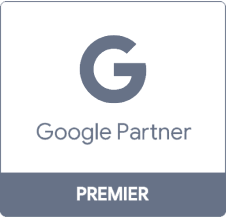How to Create Content That Will Move Your Leads Through the Sales Funnel: What Is the Role of Content?
Table of Contents: How to Create Content That Will Move Your Leads through the Sales Funnel
- How does content marketing fit into the sales funnel?
- Top-of-funnel content
- Middle-of-funnel content
- Bottom-of-funnel content
- Determining what to create
- Creating your content
- After you publish
The funnel starts with awareness that your company exists, then gradually narrows down as those who are not actually interested in becoming a customer abandon the process, and those who are take the steps to learn more.
A successful content marketer needs to not only understand this, but to create content that is tailored to each segment of the funnel. And although you could arguably break the funnel down into many different steps, for our purposes, we’ll focus on three types of content: top-of-funnel, middle-of-funnel, and bottom-of-funnel.
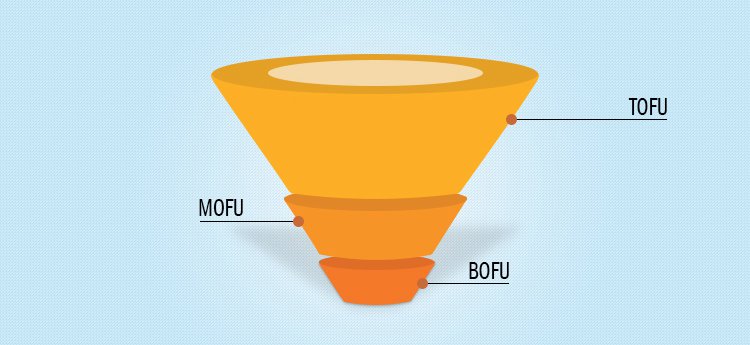
The content you create should have a logical flow. Top-of-funnel content should be published with the intent of attracting traffic (through organic search or social shares), middle-of-funnel content should capture leads and inform visitors about your company, and bottom-of-funnel content should show leads why they need your services and convince them to contact you or make a purchase.
Related: What Is a Sales Pipeline and Why Do You Need It To Drive Revenue?
The advantage of content marketing
If you’ve been marketing for years, you may be thinking to yourself that nothing I’ve said so far is news to you. You may even think that your current digital advertising methods address every portion of the sales funnel. And you know what? You may be right.
The big difference, however, lies in the cost-effectiveness of content marketing. For example, let’s take a look at what the sales funnel might look like for a women’s clothing brand:
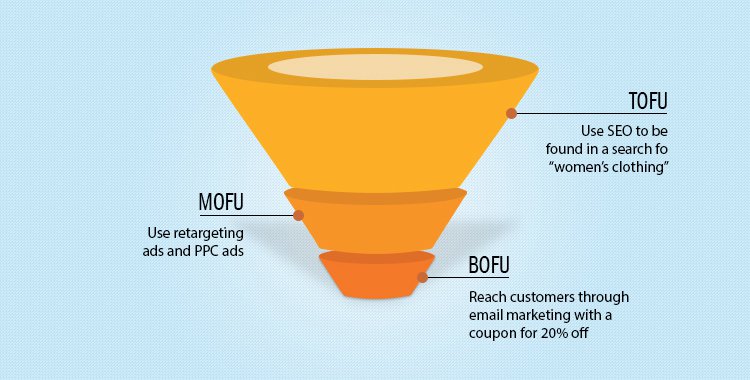
The goal with this type of funnel is to build awareness of your brand before sending the 20% off coupon – and that’s smart. Potential customers are much more likely to take advantage of a promotion and make a purchase from a company they’re familiar with than one they aren’t, and if they’ve already visited your site and seen several ads, they know exactly what to expect.
Doesn’t sound like a bad strategy, right? Not at all. But let’s take a look at how content marketing could change the top two portions:
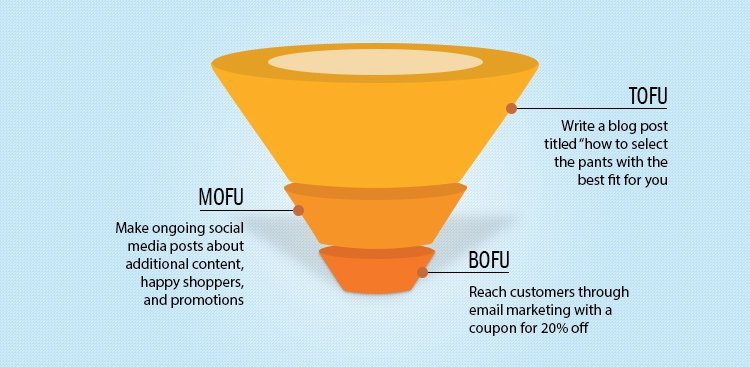
While the goal here is still the same (building brand awareness before sending the coupon), the costs associated with the first two steps are very different. Doing SEO well enough to rank for a keyword like “women’s clothing” would require a ton of time and effort, while writing a blog post about selecting a pair of pants could be accomplished in a matter of hours.
In addition, think about the quality of traffic for each example. Search engine users simply looking for “women’s clothing” could be looking for any number of products or styles, and chances are that if they’re searching for that vague of a keyword, they aren’t very close to making a purchase.
On the other hand, users searching for “how to select the pants with the best fit for you” are clearly searching for a retailer that sells pants that are made to fit well. If written well enough, a blog post on the topic could not only generate awareness of your brand, but also build trust. Even if the searcher isn’t ready to make a purchase then and there, they’ll probably have positive associations with your company – and maybe even like your social pages.
Now let’s move to the middle of the funnel. Retargeting and PPC ads can certainly be effective, but there’s usually a price tag to match. With social media, however, posting is completely free. And while there are paid options you may choose to explore, they are by no means mandatory.
According to HubSpot, the difference in cost between inbound leads (leads generated by content) and outbound leads is significant:
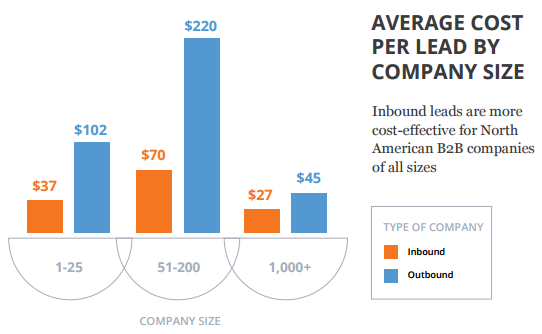
Although the gap is biggest for mid-size companies, the fact is that content marketing is more cost-effective than other methods. And think about it: customers who actively seek out information and find it on your site are going to be much more receptive to the idea of purchasing from you than those who see annoying advertisements while browsing the Internet.
Go Back Start Reading: Top-of-funnel content →
Marketing Tips for Niche Industries
- Higher Education Content Marketing: 5 Tips for Creating Content
- How Accountants Can Benefit from Content Marketing
- How Insurance Agencies Can Grow with Content Marketing
- Industrial
- Successful Content Marketing Strategies for Interior Design
- The Basics of Content Marketing for Jewelers
- 10 Reasons Rehab Centers Should Use Content Marketing
- 3 Content Marketing Ideas for Fashion Brands
- 3 Content Marketing Ideas for Retail Stores
- 3 Effective Ways to Use Content Marketing for Ecommerce


